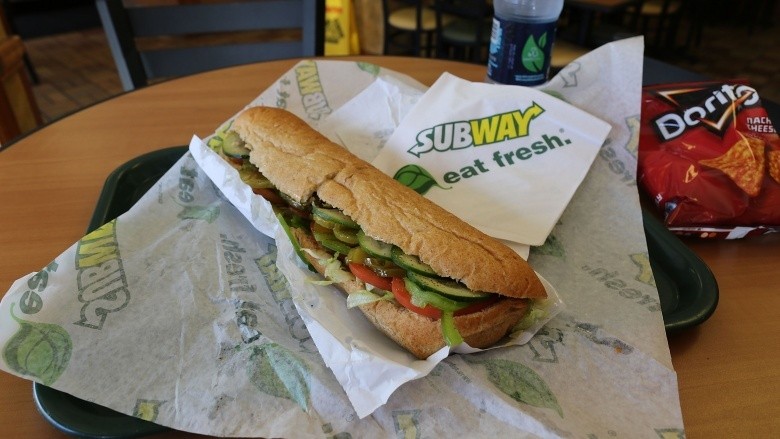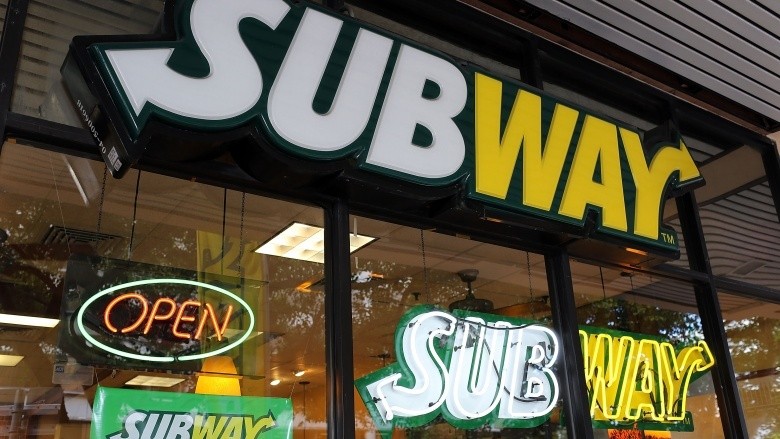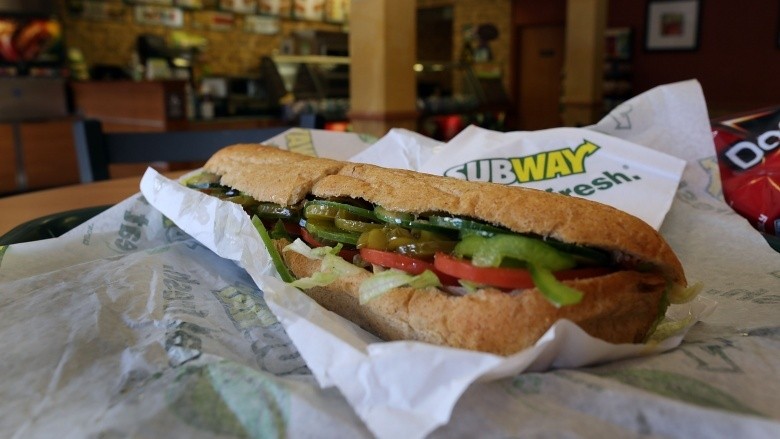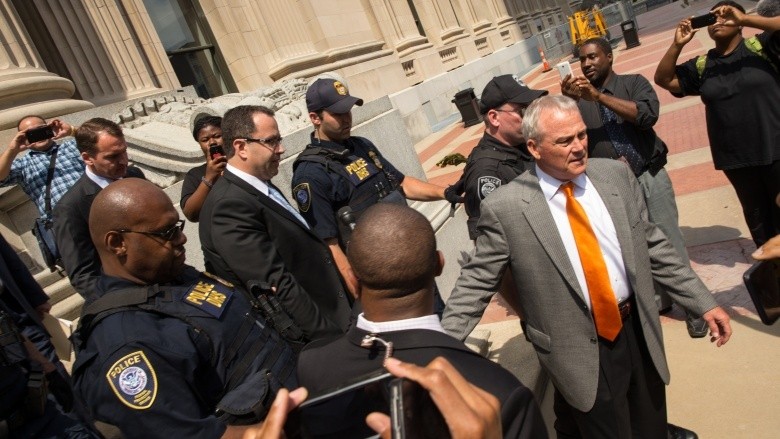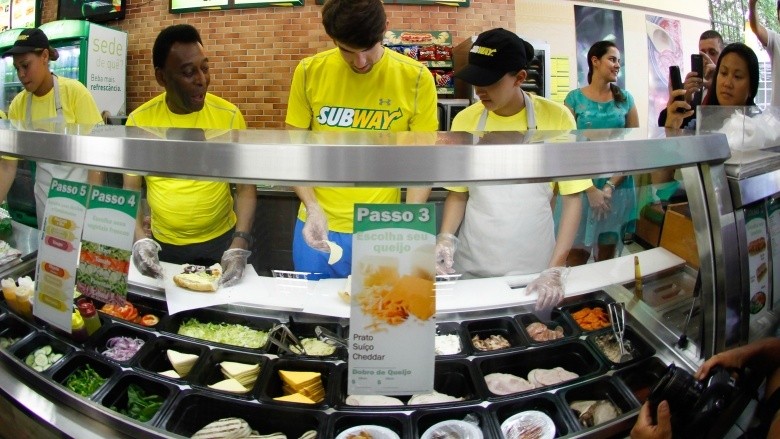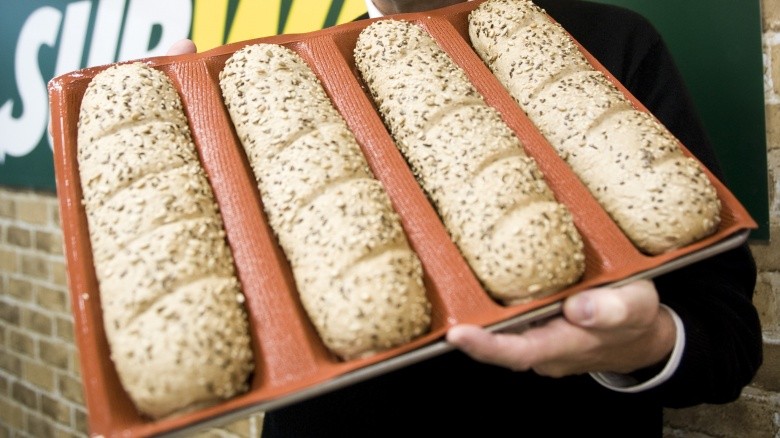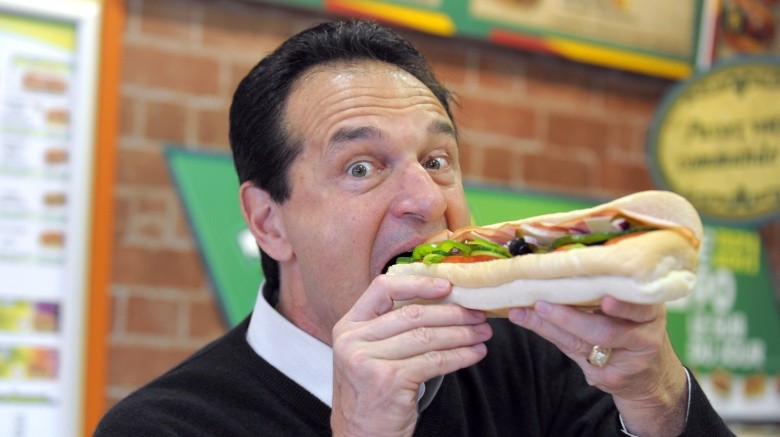The Real Reason Subway Got Rid Of The $5 Footlong
In 2007, fast food sub shop Subway launched what turned into a massively successful campaign: the $5 footlong. There was really nothing to complain about. For $5, you got a pretty decent sub with a variety of options, but, in February 2016, Subway raised the price $1 with a bizarre tweet that made it sound like Subway was doing its customers a favor. The tweet read: "BREAKING NEWS: Starting February 4th ALL your favorite classic footlongs are $6." The Twitterverse was as unhappy as you'd expect and, like any business decision, it turns out there's a bit more to it than what Subway first admitted to.
The official statement
There was something awesome about the $5 footlong, and it wasn't the jingle. That bears repeating: it definitely wasn't the jingle, the one you're singing right now. That's one of the signs of a brilliant marketing campaign, and even if you think it's annoying, it's a success if you remember it. Five dollars is a nice, even number, a single bill (tax notwithstanding), and you really did get a decent amount for your money. You could do much worse going out for lunch, after all. The $5 footlong kicked off in 2007, and any ad campaign that gets close to the 10-year mark is pretty good.
So it's no wonder people were angry when it disappeared. According to Subway's official announcement, the price of its "classic" subs was going up to $6 to combat rising costs. That's a legitimate concern for all businesses. Take a look at inflation over the past nine years, and you'll find that Subway is actually right in line with covering its rising expenses. Between 2007 and 2015, cumulative inflation was about 14.3 percent, and that means that what you could buy for $5 in 2007 would cost you $5.72 in 2015. Consider that, and the jump from $5 footlong to $6 footlong is legitimate, if not as catchy.
The footlong lawsuit
At a glance, you might think that Subway's biggest problem is the same rising costs that are impacting the business plans of all commercial entities, and the spending practices of all consumers. But Subway is having some other financial difficulties that means keeping the $5 deal (and keeping people happy) might be off the table.
In 2013, Subway was taken to court over claims of false advertising. The $5 footlong had a problem, namely that it wasn't actually 1 foot long. Attorneys measured 17 sandwiches from local New Jersey Subway restaurants, and none of them cracked 12 inches. Since Subway's rolls are shipped frozen then thawed and baked on location, there was no set method in place for making sure each sub roll really was stretched to 12 inches, and in spite of Subway's insistence that the term "footlong" was essentially an advertising gimmick instead of an actual promise, Subway was made to cough up. In addition to handing over $500 to each of the original claimants, it also ended up dishing out $520,000 in legal fees and agreeing to implement new measures across the board that would help keep its footlongs actually a foot long. Not only did Subway have to make all its franchisees measure all their footlongs (and 6-inch subs) to make sure the customer was getting what was advertised, but Subway also had to re-work training materials and guidelines for franchise owners. That's not cheap.
Jared Fogle's impact
In August 2015, longtime Subway spokesman Jared Fogle pleaded guilty to a host of horrifying charges, and even though the sub shop immediately condemned him and his actions, the court of public opinion invariably linked Fogle's crimes with the chain. After claiming a 2.6 percent decline in revenue from 2014, 2015 ended with another 4.3 percent drop in business revenue.
Even though Subway acted quickly in distancing itself from its spokesman, it's likely that the damage is done for a lot of people. After Fogle filed his guilty plea, the U.S. attorney publicly stated that it was the millions that Fogle had earned from his role as Subway pitchman that funded his illegal and underage activities, and that his perceived celebrity status had helped him keep his actions out of the public eye for so long. Even though the darkness that was his personal life has nothing to do with Subway directly, the strong feelings and connections between the brand and its spokesman's actions were undeniable. Advertising professionals like the consultants of Landor Associates said it was inevitable that, at least for a while, the brand would be linked to the exploitation of children. The connection was made worse with just how much Subway had relied on Fogle to promote its healthy image and how long his campaign had lasted: a whopping 15 years. It was still going strong when he was arrested. A new ad was released on the same day his home was raided.
Expanding too fast
But Fogle obviously wasn't the only reason Subway's financials were falling. Business Insider took a look at what Subway was doing wrong, and it's a long list that starts with overexpansion. In spite of opening 911 new U.S. locations in 2015, it also closed 877. Erratic growth isn't something that any chain wants to see, and establishing new, successful locations without overreaching is a critical step in the business plan that Subway had completely missed on. Subway's other money woes didn't help either.
Not keeping up with current trends
It's critical keep up with current trends. Because Subway was way ahead of the game in terms of making healthy offerings and advertising a sort of anti-McDonald's where people could go to get a decently healthy meal with all the speed of a Burger King, they were happy enough to simply maintain that place. Other chains (like Panera Bread and Chipotle) started popping up and staking their reputations on fresher ingredients with fewer additives than Subway used. Social media campaigns launched against Subway forced it to change things like its bread recipe to get away from the additive azodicarbonamide, but the campaigns also raised public awareness to the fact that there were still ingredients like that lurking behind Subway's fresh facade. While other chains were making strides toward being more and more "natural," Subway was content to stagnate.
It shouldn't have been that surprising
It's a sad end for a promotion that's become so iconic, and there's a good reason it's so well associated with the brand: it catapulted Subway to the top tier of the fast food ranks ... for a while. The $5 footlong brought in a whopping $3.8 billion in sales in 2009 and put Subway among the top 10 fast food chains for that year, allowing the smaller company to shoulder past giants like Burger King and Wendy's and seize a huge portion of the market share. It's no wonder that everyone was heartbroken at the announcement that it was coming to an end.
That all led to Subway's fall from the top of the food chain. Chances are it's not even in your top 5 when it comes to deciding where to go for lunch. Thanks to a combination of contentment with the status quo, scandals, lawsuits, and overexpansion, Subway's falling profits (coupled with their rising costs), ultimately spelled the end of everyone's favorite sandwich meal deal: the $5 footlong.
It only worked for one simple reason
Why did the $5 footlong work in the first place? Because our simple human brains like round numbers. The promotion was the brainchild of Stuart Frankel, a Subway franchisee who owned two Subway restaurants in Miami. In 2004, he wanted to revive sales that dropped off substantially on the weekends. He decided a promotion was in order, and since he liked round numbers, he decided to offer footlong subs at the nice, round price of $5. (To be precise, he charged $4.67 so tax made them exactly $5.)
According to Frankel, Subway was slow to catch on to the possibilities that his $5 promotion presented. It wasn't until 2007 that he was invited to corporate headquarters and asked to take over an ailing store in Fort Lauderdale. While he didn't accept, he did introduce his promotion there. It turned that store around, and it eventually went national three years after Frankel had first seen his weekend sales skyrocket thanks to his nice, round number. Customers everywhere could get a better deal than they were used to, and the annoyingly memorable ad campaign helped cement the idea in the public consciousness.
